Ringling Bros. Barnum & Bailey Circus has been around for 145 years, but it has recently undergone its biggest makeover ever, eliminating its elephants and bringing in a Cirque-style high-tech show with a space age theme.
The shift to new technology — amid protests about how the circus creates a cruel life for animal performers — is an attempt to bring “The Greatest Show on Earth” to the millennial generation.
“From the opening moment, you’ll experience the tech,” said Lorelei Owens, the show’s lighting and pyrotechnic expert, in an interview with VentureBeat. “‘Circus’ has an old-fashioned feel to it. When you think about the roots of it, circuses have always been at the forefront of technology. Traveling circuses were one of the first shows to use Thomas Edison’s light bulb in a show setting.”
The circus, which is owned by Feld Entertainment, is changing with its audience, embracing everything from smartphone apps to high-tech lighting systems and pyrotechnics. Much like the successful Cirque du Soleil shows, the outer-space-themed show puts less emphasis on live animal acts, though it still uses them in a spectacular way.
AI Weekly
The must-read newsletter for AI and Big Data industry written by Khari Johnson, Kyle Wiggers, and Seth Colaner.
Included with VentureBeat Insider and VentureBeat VIP memberships.
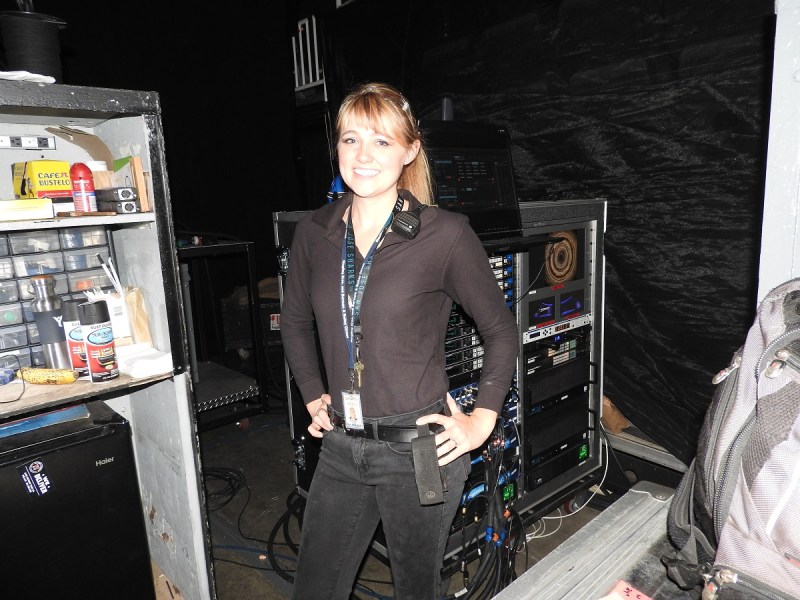
Above: Lorelei Owens, head of lighting and pyrotechnics at Ringling Bros. Barnum & Bailey Circus.
“It’s changing with the times,” Owens said. “When you are in the entertainment industry, you have to see what is popular. With our generation, the millennial generation, phones are popular, Rather than try to fight it, Feld has tried to embrace it. It’s a whole new generation of circus. This isn’t your mother’s circus. This isn’t your grandparents’ circus. This is our circus. This is our technology. And it’s something we are very proud of. This is our contribution to culture and the arts.”
Outside the event I attended, there were numerous animal rights activists handing out flyers claiming that Ringling Bros. is continuing to abuse elephants — which were, in fact, pulled out of the circus and are currently housed at its Center for Elephant Conservation in Florida — as well as the big cats that are still in the show. Lions and tigers are kept in small cages and are forced to undergo harsh training practices, the activists said.
“How would you like to spend all your time in a cage?” one activist asked me.
Ringling Bros. noted during intermission that it is helping to save endangered species by raising such animals in captivity. But the move to technology also mirrors the use of technology in other big circus acts, such as Cirque du Soleil, which uses human acrobats rather than animals.
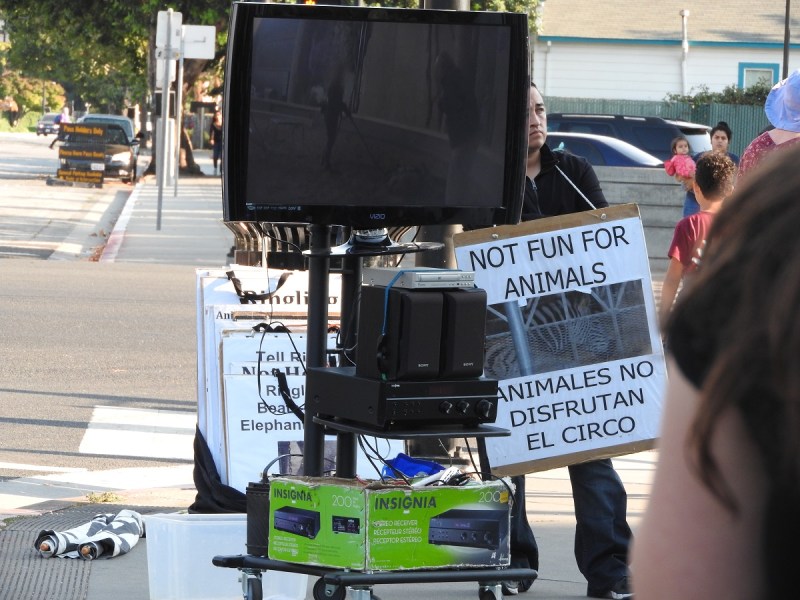
Above: There were a handful of anti-animal cruelty protesters at the Ringling Bros. show in San Jose on August 26.
Owens said that the circus will evolve and do what the audience wants, but it’s hard to speculate on whether the animals will ever be pulled out entirely. She noted that the circus focuses on providing incredible spectacles that you’ll never see anywhere else, and one of those is watching a tiger walk on its hind legs. We talked about that backstage as a tractor hauled a couple of tigers in a cage. For the most part, the animal acts are kept separate from all of the special effects.
“With YouTube and Facebook, people think they have seen it all,” Owens said. “But a lot of people have never seen a tiger stand on its hind legs and follow its trainer around the stage. If that begins to change in the future, I don’t know. It’s about giving the audience what it wants.”
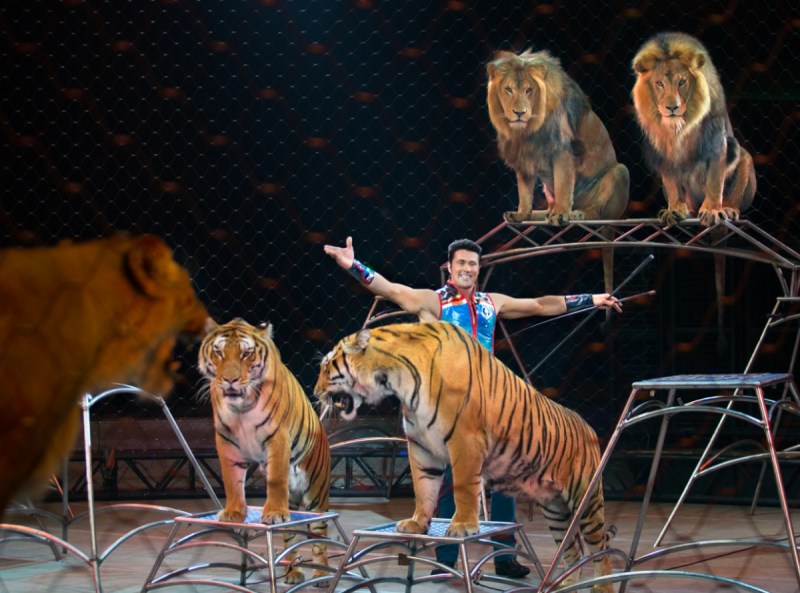
Above: The big cats at the Ringling Bros. Barnum & Bailey Circus.
As for the technology, one of the most exciting changes is the brand-new spotlight tracking system, Owens said. Performers have sensors sewn into their shoulder pads. That makes it possible for spotlights to automatically track and follow the movements of up to 72 performers at the same time. The system can also switch big spotlights between featured performers. In the past, the show could only manually track the movements of eight performers.
“Now we can change the color and the effects,” Owens said. “It all works through infrared technology. We have a number of infrared cameras mounted on our rig, and they pick up the blinking infrared sensors. Our lighting console takes that information, matches it with what the light is programmed to do, and then it automatically controls the spotlight.”
Other shows, like “Marvel Universe Live” and “Frozen on Ice” also use spotlight tracking. There’s a bunch of video servers in the backstage area, with monitors that show how the lighting board is functioning in real time. Altogether, just a few people manage all of the lighting.
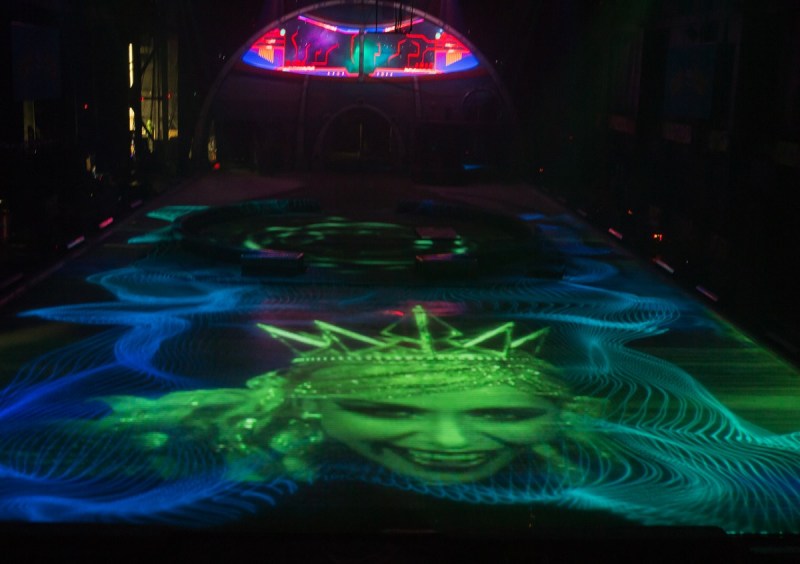
Above: Projections on ice are part of the Ringling Bros. circus.
The show also has a 72-foot video portal consisting of two large screens that visually support the plot of the space-themed show. The show has six projectors for the floor and one main projector. They can all map images on 3D surfaces, including the ice floor, as part of the illusion of whisking audiences to far-flung planets.
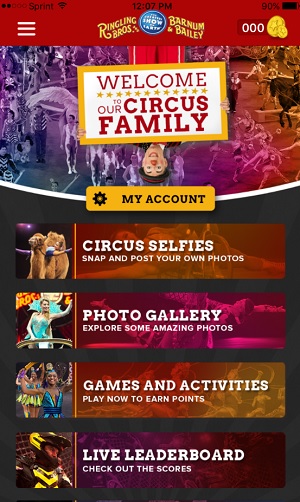
Above: The app for the Ringling Bros. Barnum & Bailey Circus.
“In the past, we needed big sets and lots of crew members to change the scenery, but now, with a touch of a button we can change the theme to anywhere in the universe,” Owens said. “We can change the ice floor to a sand planet or an ice planet. It creates an immersive perspective.”
The show’s soundboard blends live and recorded music through an over 100-channel system, much like at a big concert.
Finally, the show has an iOS and Android app that features games, contests, and trivia. Families can earn points and get a spot on the Ringling leaderboard. You can take circus-themed selfies, like a picture of yourself with a faux Ringmaster costume.
“Everyone is addicted to technology and their phones,” said Owens. “Instead of making a distraction out of it, we use it to expand their experience of the show.”
If performers get close enough to you, your phone can unlock secret info about the performer and collect points. I watched the entire 135-minute show. The opening, with its carbon dioxide fog machines and blue lighting, quickly makes you feel like you’re out with the “astronauts” in space.
“It’s one of the can’t-miss moments of the show and very reminiscent of a more modern circus style,” Owens said.
Overall, it’s a big effort. The show has 20 miles of cable. It takes about 36 hours to set up, and it takes 10 to 12 hours to tear it down.
The show runs in San Jose through September 5 and travels throughout the country after that. So far, Owens says audiences are responding well to the changes. The show I attended was thin at first, but it filled up as the main event got underway.
“There is no ‘fourth wall’ in circus,” Owens said. “Every part of the arena is in the show.”
I took some videos of the show that illustrate its more modern approach.
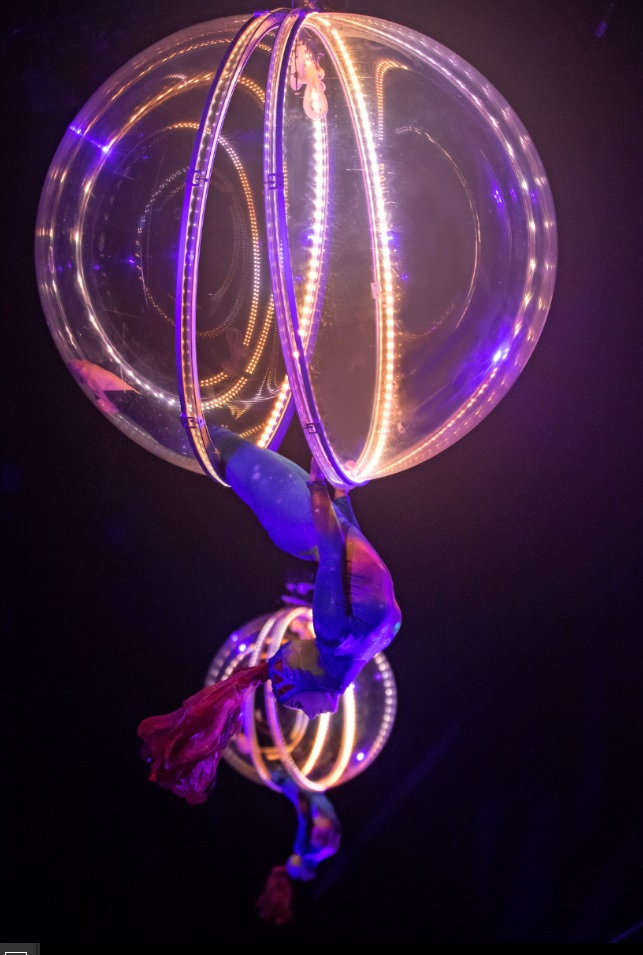
Above: Hanging from a sphere at Ringling Bros.
The most amazing part of the show was when a bunch of motorcyclists rode at high speeds while inside a dome.
The show’s opener included a high-wire act with a couple of “astronauts” on a dangerous space walk.
Horse riders and skaters add a lot of spectacle to the circus.
And it still features lions and tigers jumping over each other.
VentureBeat's mission is to be a digital town square for technical decision-makers to gain knowledge about transformative enterprise technology and transact. Learn More
